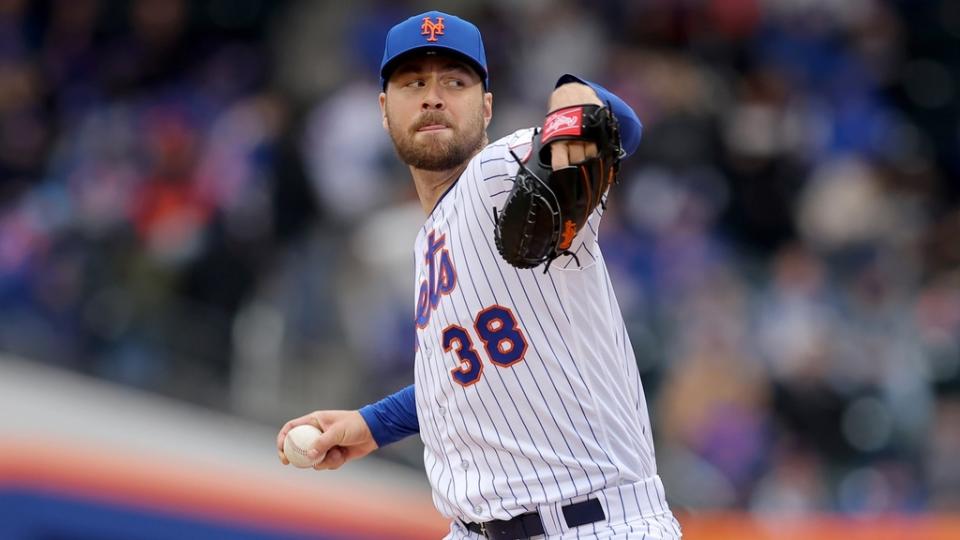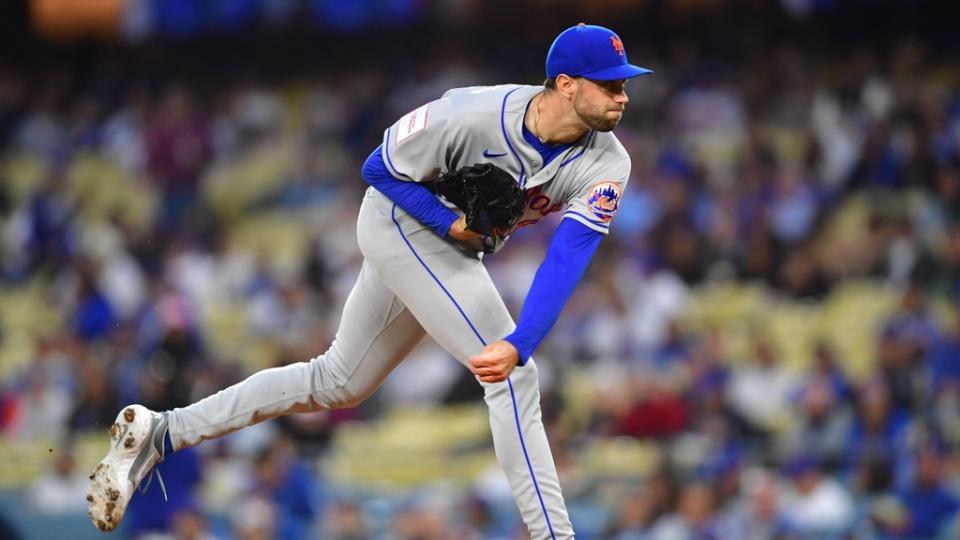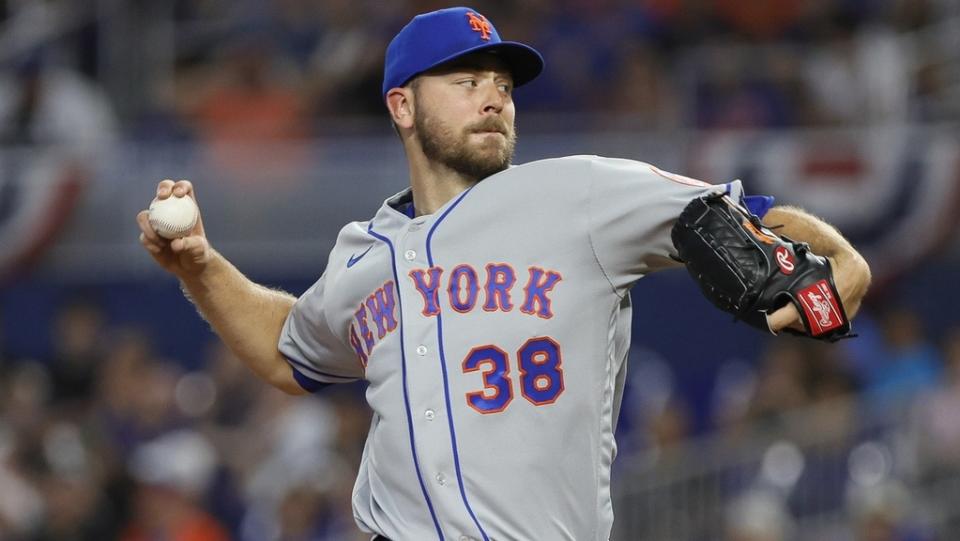
Before the season began, the expectation was that David Peterson and Taylor Megill would be very valuable depth for the Mets’ starting rotation. Perhaps one of them would be in the bullpen and the other would stay stretched out at Triple-A Syracuse. Not so fast.
Injuries to Jose Quintana (he’ll be out until at least July) and Justin Verlander (he should be back soon) changed the calculus, forcing both Peterson and Megill into the rotation.
Now, with Verlander likely close to a rehab assignment and possibly returning during the Mets’ upcoming homestand that begins on April 25, something will have to give.
It’s at this point that a couple of things should be noted…
First, the Mets — looking to keep both Verlander and Max Scherzer fresh into October and keep Kodai Senga‘s workload down as he adjusts to pitching every five days — will use a sixth starter on occasion. But they won’t be going to a straight six-man rotation.
Second, before discussing the merits of Peterson and Megill, it needs to be pointed out that Carlos Carrasco — who had two rough starts before righting the ship in his third one — is teetering a bit.
But if New York is choosing between Peterson and Megill when Verlander returns (and it seems like they will be), there’s an easy case to be made that Megill should keep his rotation spot.
In four starts over 20.2 innings this season, Peterson has a 6.10 ERA (5.51 FIP) and 1.64 WHIP.
He’s allowed an eye-popping 11.3 hits per nine, and served up five home runs. Extrapolated over a full season, Peterson would allow more than 30 homers. He gave up just 11 in 105.2 innings last season.

Digging into Peterson’s starts, he has had one strong one (one run in five innings against the Marlins), one solid one (two runs in 5.2 innings against the Padres), and two clunkers (five runs in four innings against the Brewers and six runs in six innings against the Dodgers).
In his start against the Dodgers on Monday night in Los Angeles, Peterson was arguably pushed too far by manager Buck Showalter, who asked him to pitch the sixth inning after having already allowed five runs. In the sixth, Peterson served up his third homer of the game — a mammoth shot to Max Muncy after Freddie Freeman had gone deep against him twice.
The sample on Peterson is small, but it’s all we have to go on. And a look at his advanced numbers via baseball savant shows some good and some bad.
Then there’s Megill.
After starting last season throwing his fastball in the high-90s and eventually getting derailed by injuries, Megill has adjusted his plan this season.
His average fastball in 2023 is 94.1 mph after being 95.8 mph in 2022, his slider is averaging 82.9 mph after averaging 85.7 mph, and his curve is down close to four mph (from 81.5 to 77.2). Megill’s changeup is about the same year over year. It averaged 89.2 mph in 2022 and is coming in at 88.4 mph this season.
As far as the results? They’ve been strong.
In 16 innings over three starts, Megill has a 2.25 ERA (4.64 FIP) and 1.18 WHIP. He has allowed just 6.8 hits per nine, but his strikeout rate — unsurprisingly — has dipped from 9.7 to 7.3 per nine.
Megill’s advanced stats, like Peterson’s, are a mixed bag. But of note is that he’s been better than average at limiting hard contact, which will be especially important if he continues not to miss as many bats as he has in the past.

Looking at Megill’s starts, they have ranged from solid to very good. He allowed two runs in five innings against the Marlins in his first start, fired six shutout innings against the Marlins in his second start, and held the Padres to two runs over five innings in his most recent start.
As was the case with Peterson on Monday, Megill will face a big test when he takes the ball against the Dodgers on Tuesday.
Parsing numbers this early can sometimes be an exercise in futility. It is impossible to draw conclusions from such a small sample size, and impossible to know how these pitchers will fare over a full season if given the chance.
However, if Verlander is back soon — as is expected — the Mets will have to remove someone from the rotation to accommodate him.
So far, Megill has one clear thing about Peterson: he has kept the Mets in every game he’s pitched.
There’s also the question of which pitcher is better suited for a relief role.
In nine relief appearances last season, Peterson fared well, pitching to a 3.68 ERA and 1.29 WHIP while striking out a shade under 10 per nine.
Megill struggled in limited relief opportunities after returning from injury late in the season. And the Mets are probably better off not yanking him back and forth from the rotation to the bullpen right now.
It can also be argued that in addition to Peterson’s success and Megill’s struggles in relief in 2022, that Peterson is the better fit because he would give New York a second lefty to pair with Brooks Raley. The bottom of the Mets’ bullpen is also in flux right now, with Jimmy Yacabonis, Denyi Reyesand Edwin Uceta all on the roster.
If Peterson vs. Megill in the rotation is a tossup, perhaps Peterson’s ability to pitch in relief and his potential value in that role will tilt things.